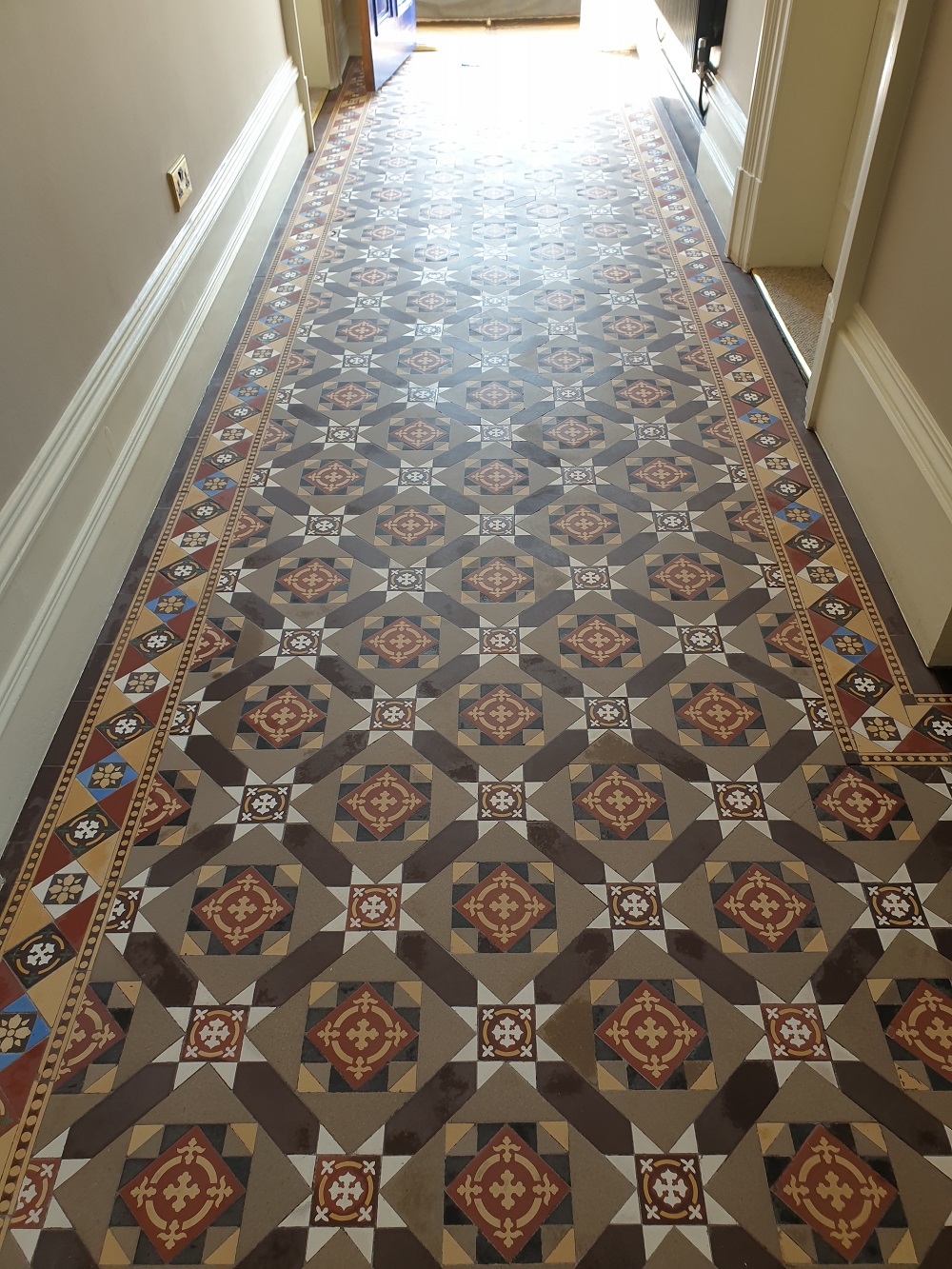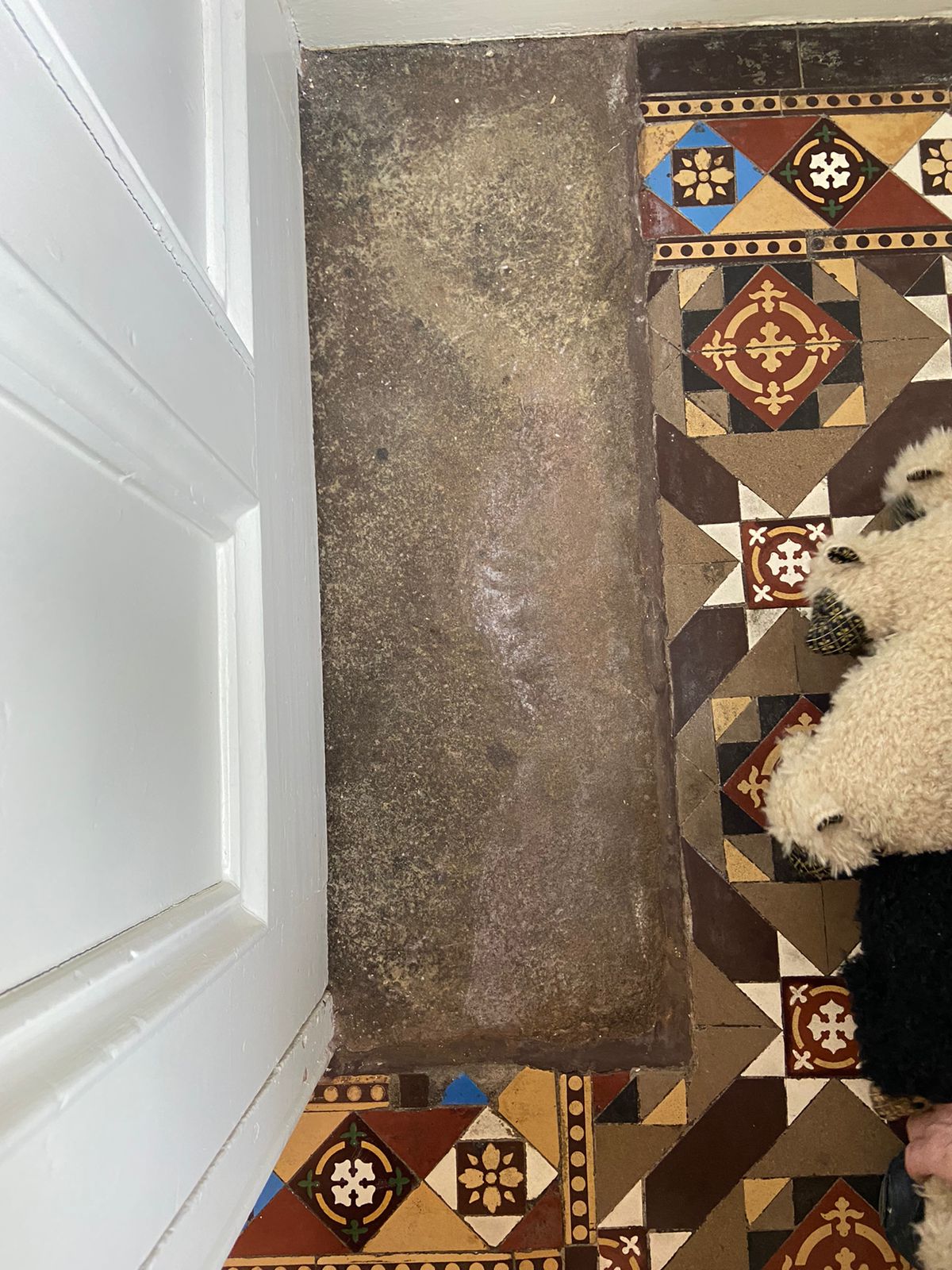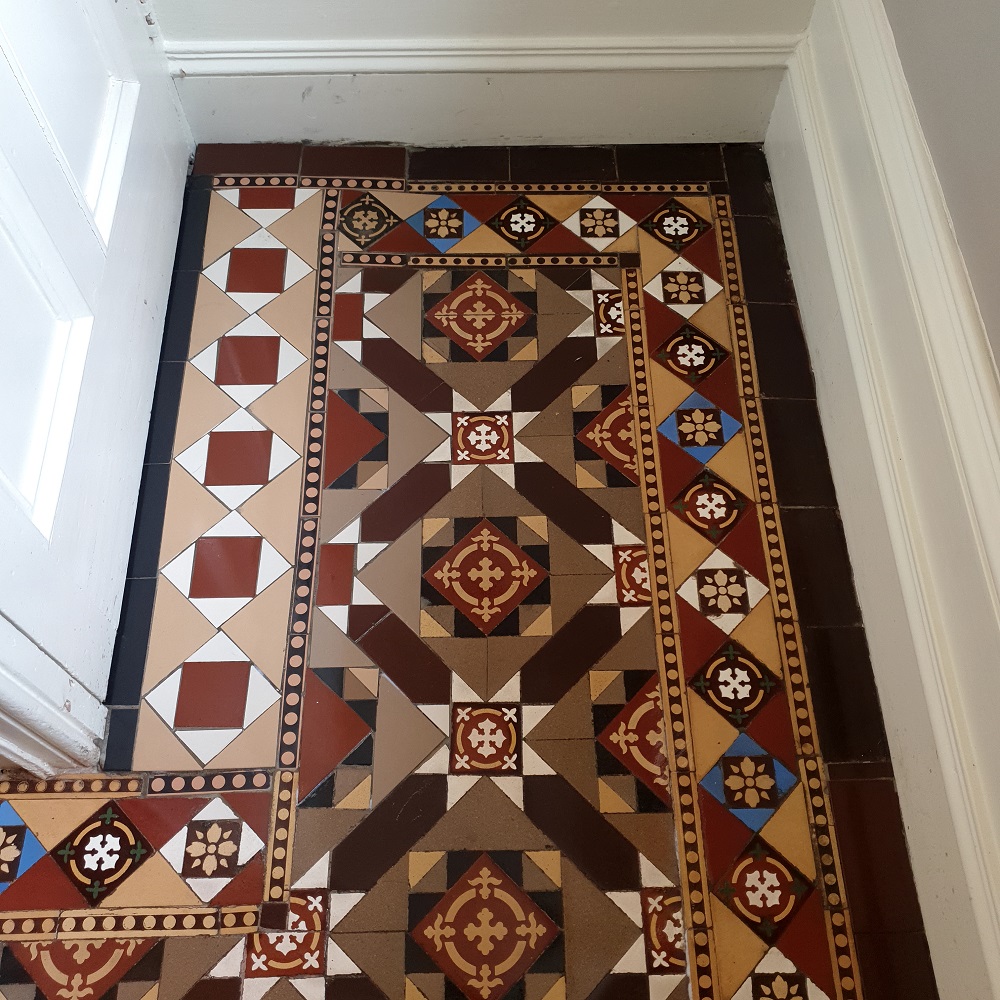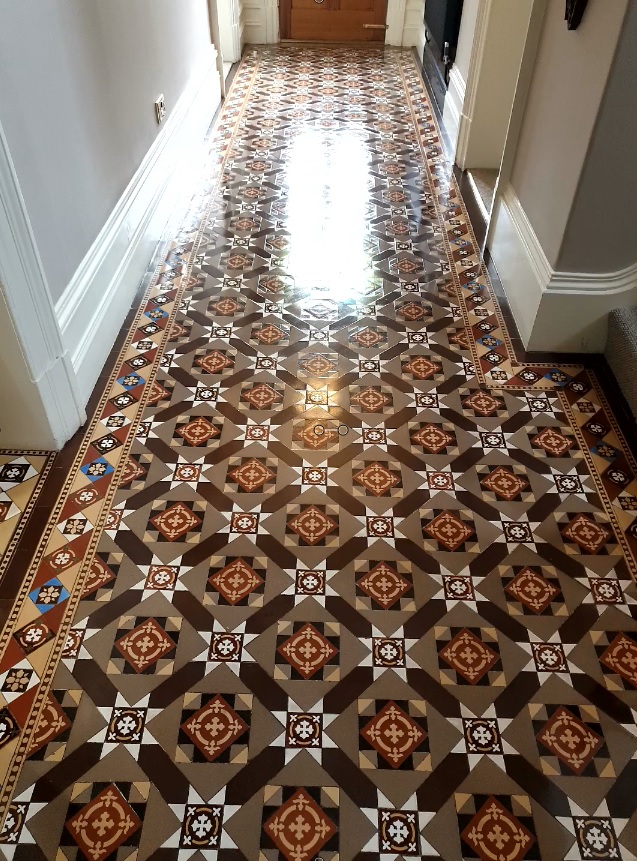We first renovated this Victorian hallway floor in Chester City Centre four years ago but at the time I was unable to locate all the picture tiles needed to tile a door threshold which was damaged. As a result, it was decided to just clean and seal the floor leaving the damaged tiles in place the customer said he would give us a call once the replacement tiles had been located.
Four years later and the floor needed cleaning and sealing again however this time the necessary replacement tiles had been sourced on eBay and so we were called back to do that and repair the threshold. Hallways being the main throughfare through the house do experience a lot of traffic so it’s not unusual for a sealer to wear off after a few years and need replacing.

Repairing and Cleaning a Victorian Hallway Tiles
The first job was to cut out the damaged tiles and replace with the replacements. This involves carefully chiselling out the old tiles so as not to disturb those adjacent. It’s not unusual for work like this to dislodge more tiles than you had intended so slow and gentle is the best approach. Once the old tiles have been removed the base is cleaned up and old adhesive scraped away.

The next step was to clean the floor using a strong dilution of Tile Doctor Pro-Clean which is a alkaline cleaner and stripper that will clean and remove any remaining sealer from the tiles. The solution was left to soak in for ten minutes before being scrubbed in using a weighted buffing machine fitted with a Black pad. The released dirt was then removed with a wet vacuum.
The next step was to treat the tiles to an acid rinse using Tile Doctor Grout Clean-up which was applied and removed using the same method as before. This process neutralises the pH level of the floor following the use of the alkaline cleaner earlier and ensures a better bond with the sealer.
The floor was then given another rinse with water and as it was drying, we laid in the section of replacement tiles. The replacement tiles were not an exact fit so some of the edges had to be rubbed down with 50-grit Diamond burnishing blocks to make the intricate pattern work. Once the Victorian tiled jigsaw puzzle matched the space, they were secured into place using rapid set adhesive.
Sealing a Victorian Tiled Hallway Floor
I left the floor to dry off overnight and returned the next day to apply a new sealer. Before doing so however I like to use a damp meter to take moisture readings from the floor. This is needed to ensure it is dry enough to seal which is important as any moisture in the tile can affect the sealer and lead to an inconsistent finish.

The readings were fine so several coats of Tile Doctor Seal and Go Extra were applied, allowing each coat to dry for thirty minutes before applying the next. This product is an acrylic breathable sealer which adds a pleasing subtle shine to the tile. This is an important feature when choosing a sealer for old floors where moisture needs to be allowed to rise through the tile, otherwise it can become trapped under the floor and reach out to the walls causing rising damp.

The hallway looked much cleaner and brighter once done and the door threshold now closely matched the one on the other side of the hallway completing the floor. Before leaving I took time to discuss aftercare cleaning for which I recommend Tile Doctor Neutral cleaner which is designed for the daily cleaning for sealed tiles; this is important as most domestic supermarket cleaners are simply too strong and can prematurely erode the sealer.
Source: Victorian Floor Cleaning and Restoration Services in Cheshire